Inspired by conversations on the Food52 Hotline, we're sharing tips and tricks that make navigating all of our kitchens easier and more fun.
Today: Mushrooms may be mysterious, but preparing them doesn't have to be.
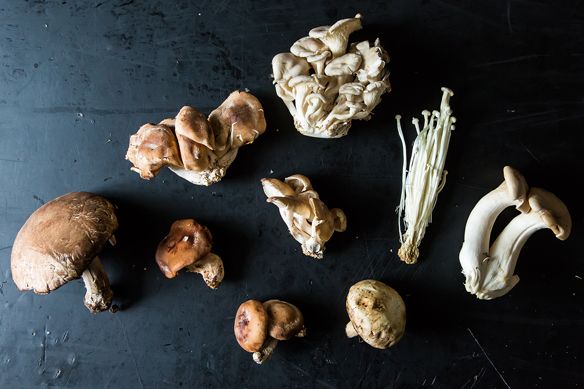
Mushrooms are mysterious.
Since ancient times, people have been practicing mycophagy -- the act of consuming mushrooms (yes, there’s a word for that) -- for medicinal, hallucinogenic, and culinary reasons. Some species are commercially cultivated, some are common in the wild, and some are so difficult to obtain that they are as pricey as precious minerals. Some species have names we’ve all heard of (porcini, chanterelle, portobello), while others are known as “wood hedgehog,” “milk cap,” and “trompette de la mort.” Some species are renowned for their delicious flavor, while others are only conditionally edible.
We’re going to leave the mycology to the professionals and stick with showing you how to prepare your favorite fungus.
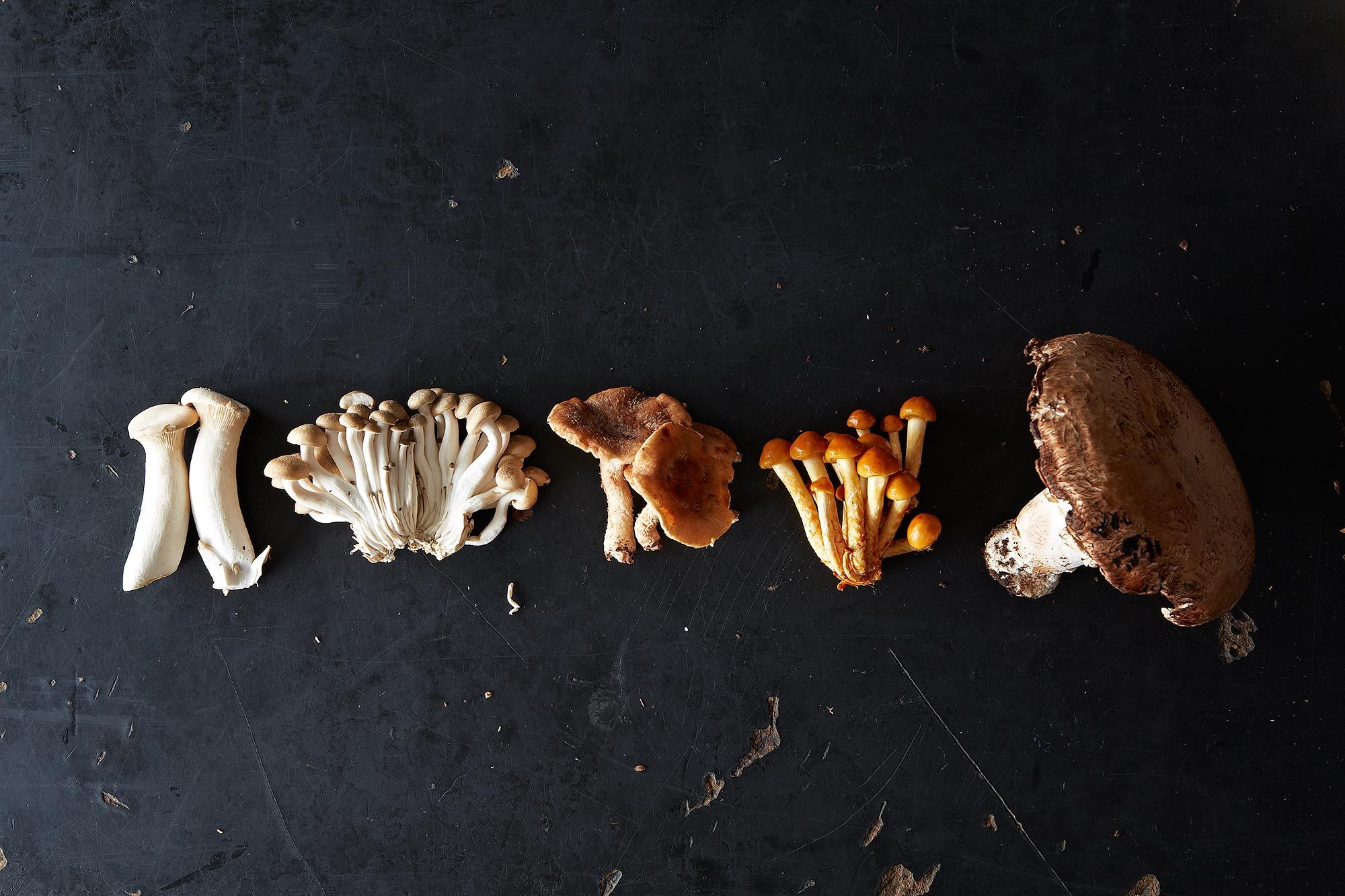
Washing
Is there any more contestible mushroom question than to wash or not to wash? Here are some easy rules of thumb that will keep your mushrooms clean and slime-free:
- Don't wash mushrooms that aren't dirty. (If it ain't broke, don't fix it.)
- Mushrooms that are dirty can be wiped with a clean or damp towel or a soft brush (a soft-bristled tooth brush will do the trick).
- If the debris can't be removed with a towel or brush, give the 'shrooms a rinse under cold water. Avoid soaking.

- Let them dry on a wire rack and use them shortly after. (Bonus tip: You can always spin them dry in a salad spinner.)
- Avoid rinsing mushrooms you will be eating fresh, as their surface will become dark and slimy after being rinsed and then exposed to air.
Cutting
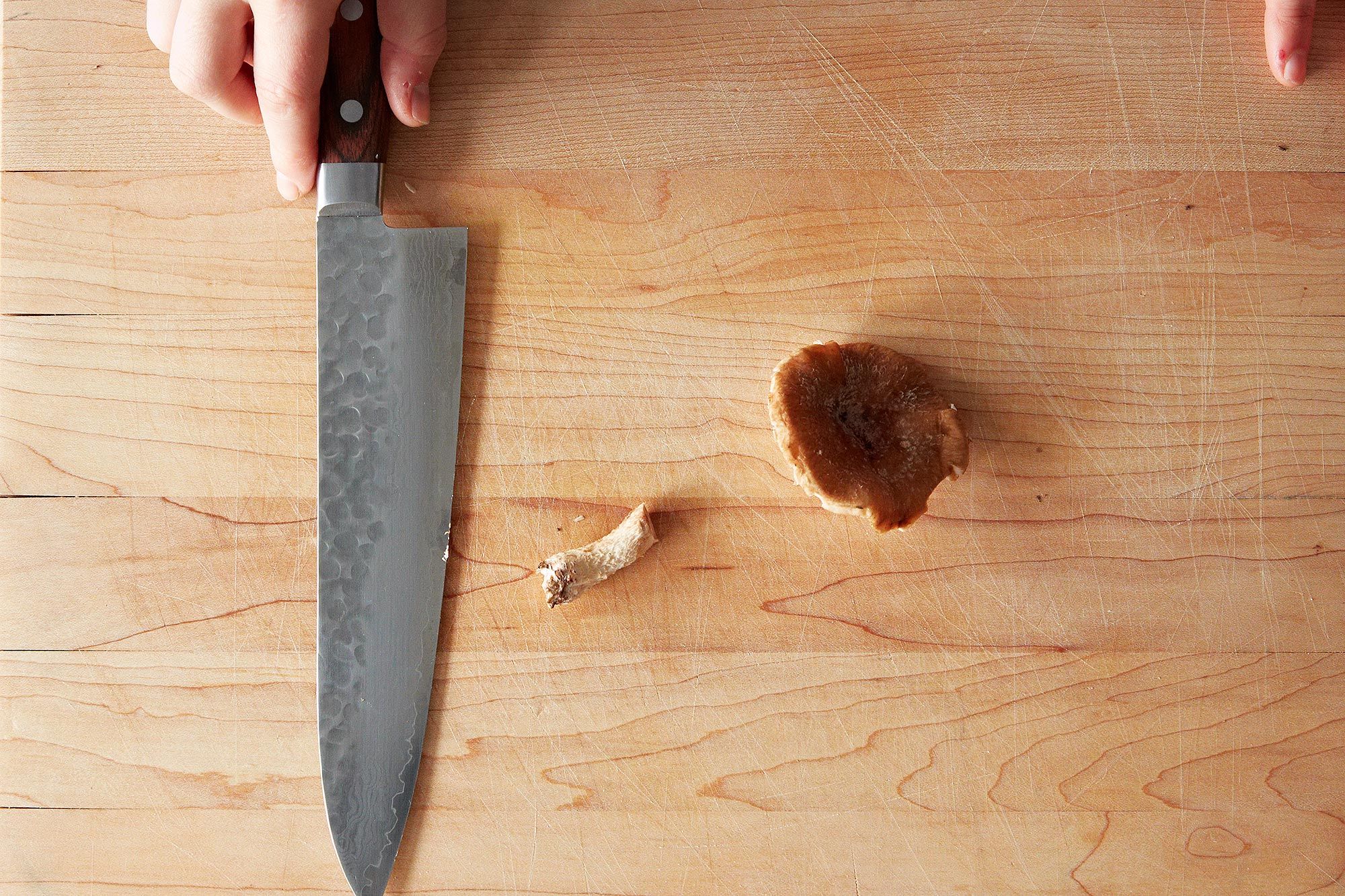
Most mushrooms (cremini, portobellos, and chanterelles, for example) can be trimmed close to the base of the stem. Shiitake stems might be woodier, in which case, trim them closer to the cap to remove the tough part, then reserve the stems for stock.
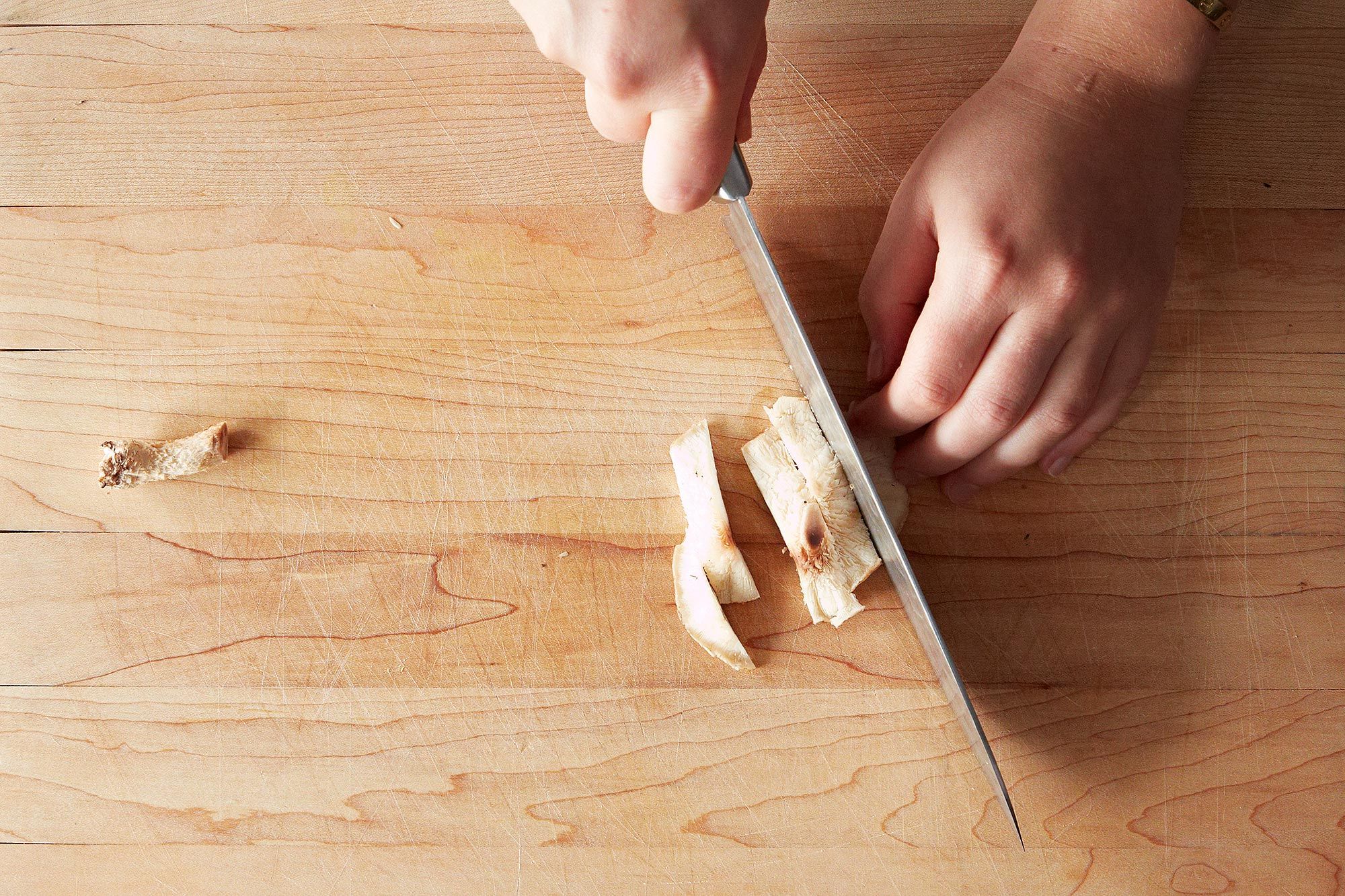
Once you've trimmed the stem, place the mushroom with the flattest side down on a cutting board and slice them. (Bonus tip from our friends at America's Test Kitchen: slice mushrooms with an egg slicer to slice white mushrooms quickly.)
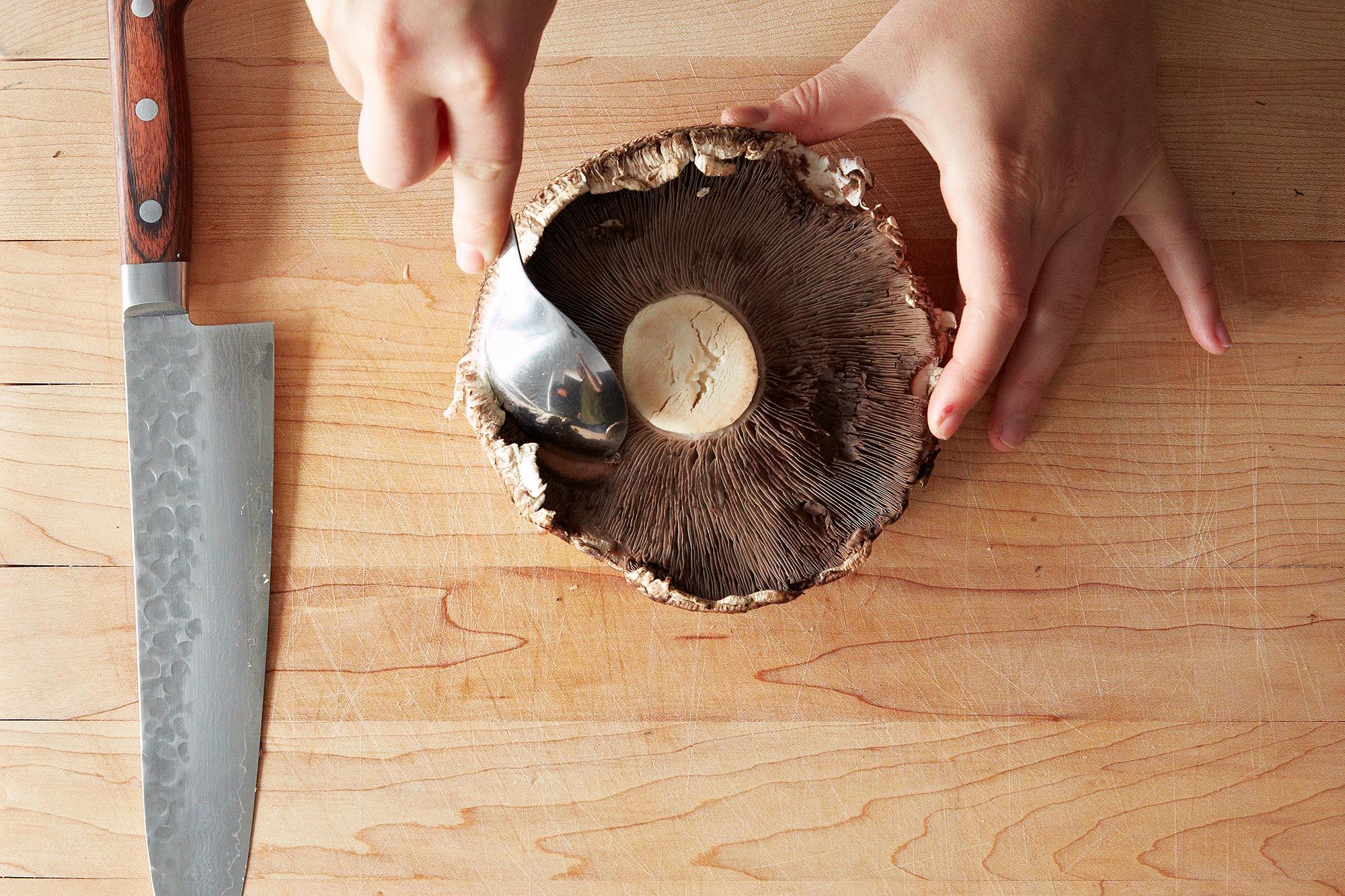

For portobellos, use the tip of the spoon to pry out the gills. While the gills are edible, they may stain the other foods they come in contact with. If they're soggy or slimy, the mushrooms are probably old.

To slice portobellos for sautéing, place a cap gill side down and make a series of cuts. For smaller pieces, cut the portobello down the center, then make a series of slices parallel to the cut side.
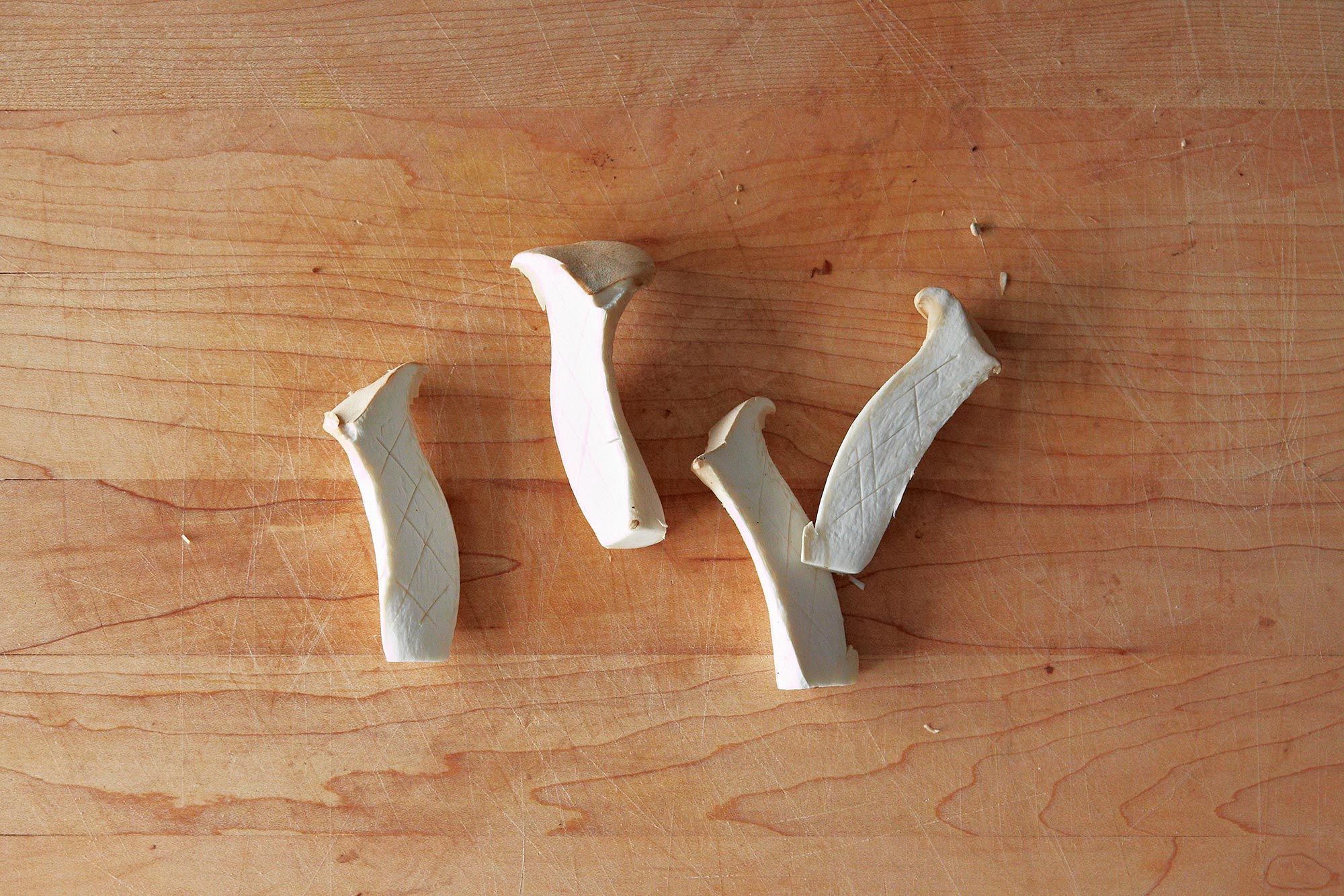
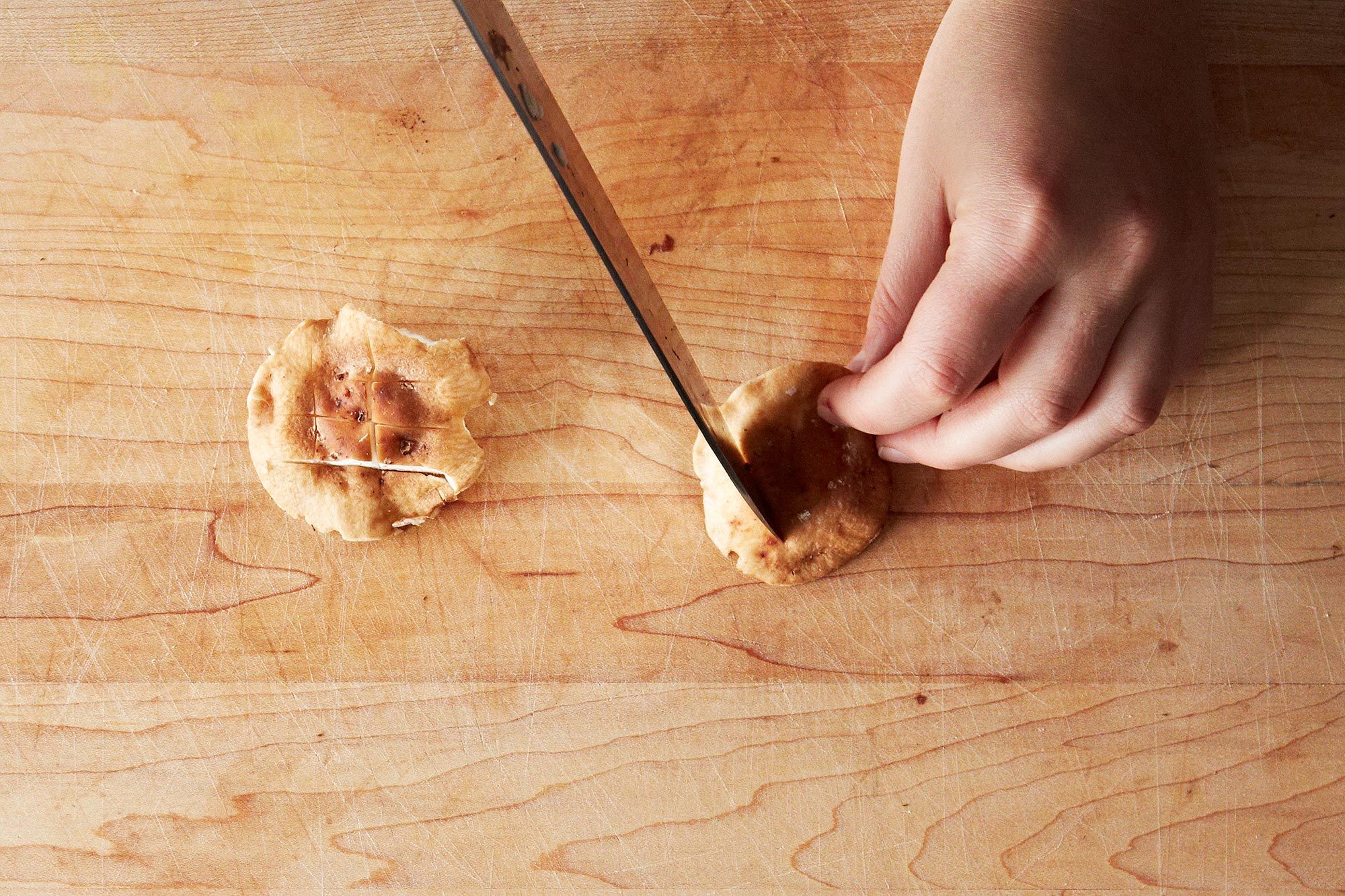
For grilling, roasting, or sautéing mushrooms whole (especially portobellos), score with shallow cuts. This allows the steam inside to escape more easily, which will speed up the cooking process so that your 'shrooms cook more evenly.
What's your favorite way to make mushrooms? Tell us in the comments below!
Photos by James Ransom











See what other Food52 readers are saying.